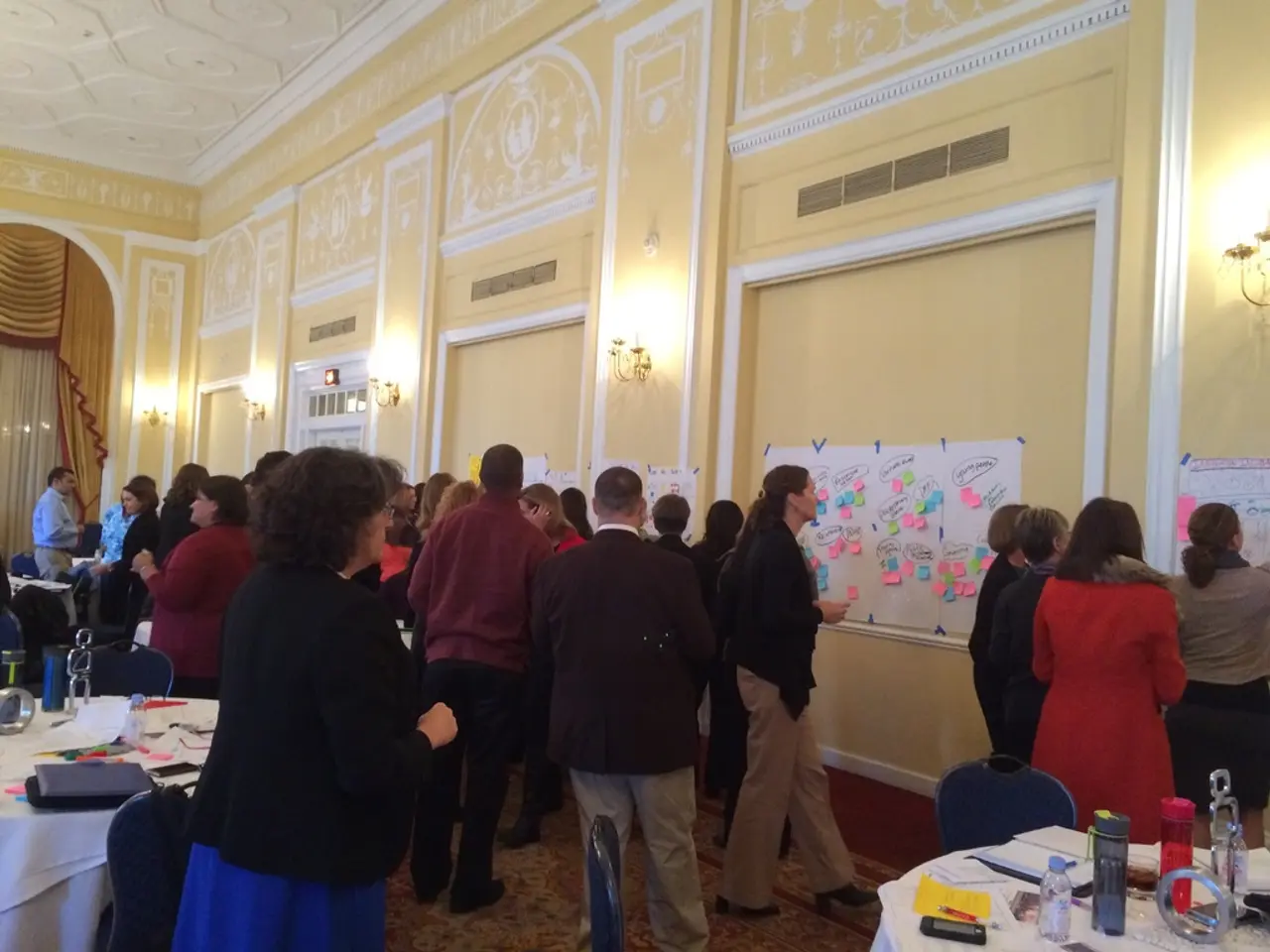Museums adopt technology, integrating artificial intelligence (AI) in their operations and exhibitions.
In the heart of India, museums are embracing the digital age, using AI to streamline collection handling, archival functions, and enhance visitor engagement. A prime example of this digital transformation can be seen at the Museum created by MAP Bangalore at the Bengaluru International Airport [1].
This revolution is global, with AI technologies being used in museums worldwide to digitize collections, create virtual guides, and offer interactive experiences. Here's a closer look at how AI is transforming museums:
- Digitizing Collections: AI is helping museums organize and preserve their collections more accurately. In insect studies, AI precisely distinguishes similar specimens, minimizing errors in cataloguing [4].
- Interactive AI-powered Guides: Personalized tour experiences are now a reality, thanks to AI. Visitors can interact with chatbots that answer queries and provide rich contextual information [2].
- Virtual Reality (VR) and Augmented Reality (AR): These tools enable virtual tours and immersive exploration of artifacts, making museums accessible beyond physical limits [2].
- AI-driven Recommendations: Exhibits and narratives can now be tailored to visitor interests, enhancing engagement and learning [3].
The Bengaluru International Airport museum's digitization efforts demonstrate how AI supports cultural preservation and accessibility in public spaces [1]. These innovations transform visitor interaction by enabling digital navigation, interactive storytelling, and easier artifact exploration.
While specific documentation on extensive AI deployments in Indian museums beyond digitization projects is limited, global trends suggest India is likely to adopt AI-driven virtual tours, personalized visitor experiences, and digital cataloging soon, if not already.
AI in Indian museums is revolutionizing the museum experience by digitizing heritage, enhancing accessibility, enabling interactive and personalized visitor engagement, and preserving artifacts more accurately. These changes make museums more immersive, educational, and widely accessible to diverse audiences.
However, it's crucial to ensure diversity and inclusivity in AI training datasets to avoid biased interpretations of cultural artifacts. Ethical concerns, privacy of data, and the requirement for human intervention still exist in the use of AI in museums.
The incorporation of AI in museums is not just about preservation and understanding history and art. It's about bringing together heritage and innovation in an unrivaled union. The Da Vinci Genius Experience in Mumbai showcases this perfectly, offering interactive displays and allowing visitors to transform their designs into Da Vinci's historic paintings [5].
AI is also being used for research on historical pieces, including analyzing art styles, tracing history, authorship, and patterns in artwork. However, AI-created art or restorations can blur classical concepts of artistic worth and origin, necessitating new models for ethical employment and legal acknowledgment.
In conclusion, AI is revolutionizing the way cultural institutions preserve, understand, and showcase history and art. As India continues to adopt these technologies, museums are poised to become more interactive, educational, and accessible than ever before.
[1] MAP Bangalore Digitizes Museum at Bengaluru International Airport [2] AI and Museums: A New Era for Cultural Institutions [3] How AI is Transforming Museums [4] AI Helps Insect Museum Catalog 4 Million Specimens in One Year [5] The Da Vinci Genius Experience in Mumbai
- Artificial intelligence (AI) is playing a significant role in the education sector, as it is being used in museums worldwide to digitize collections, create virtual guides, and offer interactive experiences, providing learners with immersive, accessible, and personalized educational opportunities.
- In the realm of culture, AI is not just about preservation and understanding history and art, but also about fostering innovation. For instance, the Da Vinci Genius Experience in Mumbai uses AI to offer interactive displays that allow visitors to transform their designs into Da Vinci's historic paintings, thus bridging the gap between heritage and technology.




